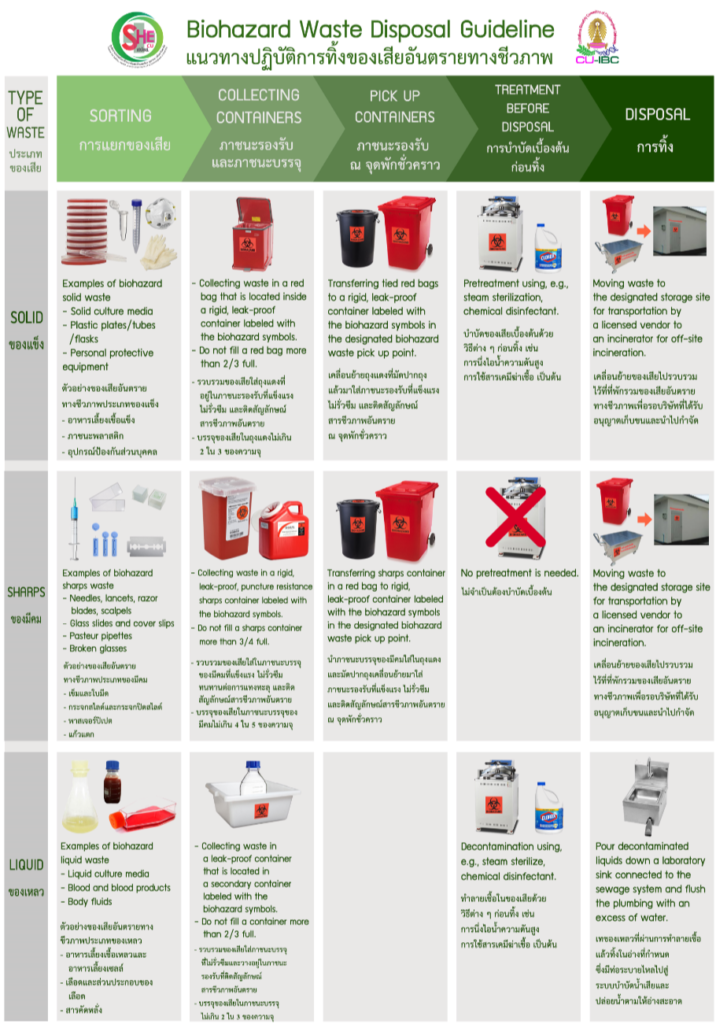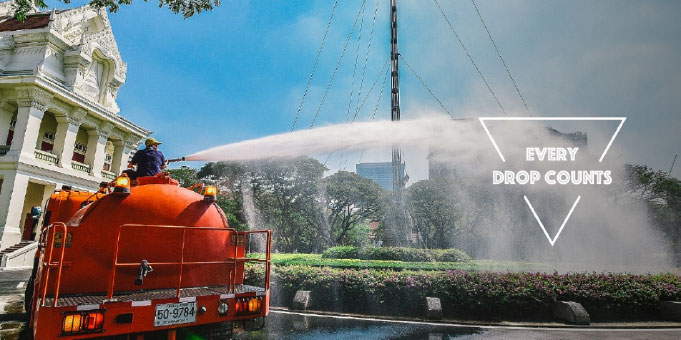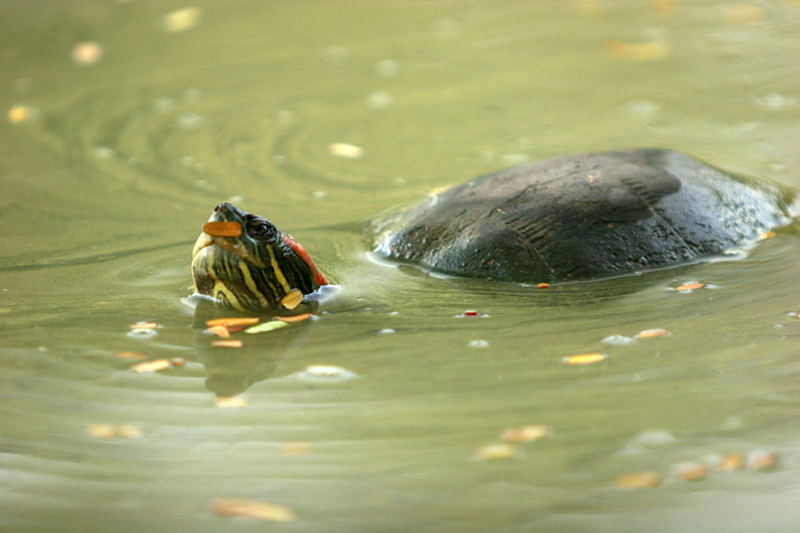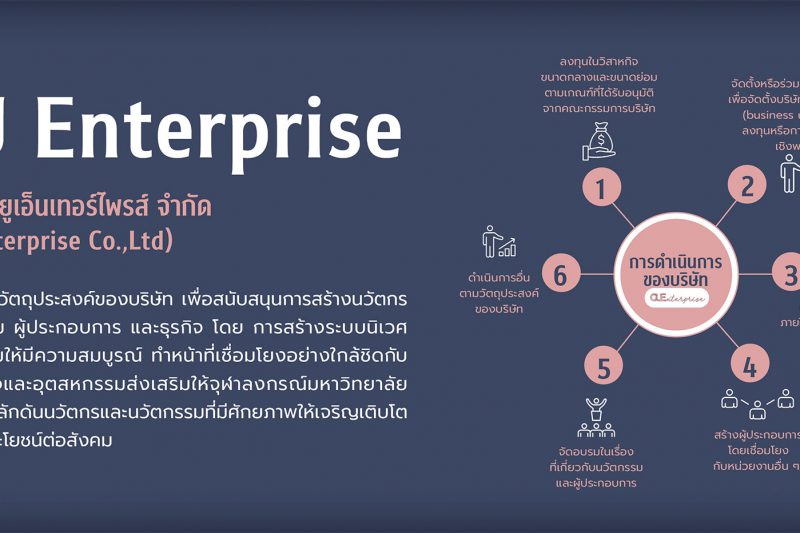Chulalongkorn University adheres to sustainable water quality standards and guidelines for water discharges
Promoting sustainable environmental and water resource management is crucial for conserving and maintaining high-quality water resources, safeguarding human health, and protecting the ecological systems that depend on water for survival. This is another significant area where Chulalongkorn University has been continuously engaged, aiming to become a sustainable university and contribute to the global community in achieving the Sustainable Development Goals (SDGs), which consist of 17 goals.
Currently, Chulalongkorn University manages its environmental resources and water systems on campus to ensure clean, safe, and high-quality water for consumption and other uses. This initiative also aims to mitigate and prevent water pollution issues that could arise from the university’s water usage as follows:
Wastewater treatment system for buildings
Office of Physical Resources Management, Chulalongkorn University has installed wastewater treatment ponds serving buildings within the university premises with an area of over 5,000 square meters, as well as all canteens. The system comprises a grease trap pond, an anaerobic waste water treatment pond, an aeration treatment pond, a waste stabilization pond and other related facilities. This is aimed at reducing and preventing water pollution issues resulting from the university’s water usage.
In addition to the comprehensive installation of wastewater treatment systems for buildings, Office of Physical Resources Management, Chulalongkorn University has also developed and disseminated best practices for managing these systems. This is to ensure that the effluent quality meets the legally prescribed standards. It enables all building administrators to perform necessary procedures and conduct system inspections for initial issue identification. These measures are established as part of Wastewater treatment system for buildings management guidelines, as follows:
The ‘wastewater treatment system’ refers to wastewater treatment ponds serving buildings within the university premises with an area of over 5,000 square meters, as well as all canteens. The system comprises a grease trap pond, an anaerobic waste water treatment pond, an aeration treatment pond, a waste stabilization pond and other related facilities.
- Building staff responsible for the wastewater treatment system are required to follow the Ministry of Natural Resources and Environment B.E. 2548 waste treatment guidelines and standards for buildings of certain categories and sizes. [ https://www.pcd.go.th/laws/4403 ]
- Building staff must record performance of the waste water treatment system in the Tho So 1 and 2 report forms and submit them every month to the Office of Physical Resources Management.
- In the aeration treatment pond, readings for pH levels, Dissolved Oxygen (DO) and Sludge Volume30 (SV30) must be taken and recorded regularly.
- In the waste treatment pond for canteens, a grease trap pond must be installed. Grease must be removed from the pond daily whenever canteens are operational.
- Building staff are required to regularly inspect and maintain waste treatment system equipment and machinery, such as covers for the treatment ponds, sewage pumps, aerators and sludge pumps. Any item with impaired function must be promptly repaired.
The management system for hazardous chemicals and waste from laboratory experiments
The Center for Safety, Health and Environment of Chulalongkorn University in collaboration with the Center of Excellence on Hazardous Substance Management, Chulalongkorn University, has developed protocols and management systems for chemicals and hazardous waste. These guidelines and procedures are communicated to students, faculty, researchers, and all relevant personnel who utilize laboratory facilities, ensuring adherence to prevent the risk of water pollution from chemical and hazardous waste contamination originating from laboratory experiments entering the university’s wastewater system, affecting both the campus water system and natural water sources within and outside the university.
- Biohazard Waste Disposal Guideline
[ https://www.shecu.chula.ac.th/home/content.asp?Cnt=151 ]

- Guidelines for Managing Chemical Waste
[ https://www.shecu.chula.ac.th/data/boards/120/%E0%B9%81%E0%B8%99%E0%B8%A7%E0%B8%9B%E0%B8%8F%E0%B8%B4%E0%B8%9A%E0%B8%B1%E0%B8%95%E0%B8%B4%E0%B8%81%E0%B8%B2%E0%B8%A3%E0%B8%88%E0%B8%B1%E0%B8%94%E0%B8%81%E0%B8%B2%E0%B8%A3%E0%B8%82%E0%B8%AD%E0%B8%87%E0%B9%80%E0%B8%AA%E0%B8%B5%E0%B8%A2(final).pdf ]
- Manual for Using the Chemical Data Management and Chemical Waste Management Program (ChemTrack & WasteTrack 2016)
[ https://www.shecu.chula.ac.th/data/boards/412/ctwtmanual2020.pdf ]
Water Recycling Project
[ http://www.green.chula.ac.th/index.php/water/water-recycling-project/ ]
Chulalongkorn University has been facing increasing costs for water, particularly to maintain campus greenery, which covers over two square kilometers.
The aims of this program are to:
- 1) Reduce water consumption and costs within the university
- 2) Promote effective use of recycled water and reduce wastewater released into surrounding communities
The university has constructed artificial ponds at various locations to collect rainwater and filter wastewater from surrounding buildings. To assure long-term success, faculty, students and staff are encouraged to conserve water and refrain from disposing trash in the pools.
Short-and long-term plans are simultaneously executed as follows:
- Short-term execution plan
- 1) Personnel have been assigned to monitor the ponds’ water filtration systems and perform maintenance when necessary.
- 2) Water pump trucks collect filtered wastewater from the artificial pools to water plants on campus.
- Long-term execution plan
- 1) Construct more pools at different locations to increase university water storage capacity and improve convenience of use.
- 2) Explore ways to make more efficient use of the high-water volume during the rainy season.

By
- Office of Physical Resources Management, Chulalongkorn University
- Center for Safety, Health and Environment of Chulalongkorn University
- Center of Excellence on Hazardous Substance Management, Chulalongkorn University
Others
Committed to Biodiversity
Surveys and other activities raise awareness of rich variety of vertebrate life in campus area





